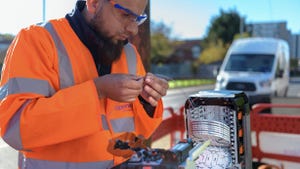March 25, 2008

Motorola Inc. (NYSE: MOT) today announced that it has officially joined the LTE/SAE Trial Initiative, the key group of operators and vendors working to accelerate the development of the 4G mobile broadband standard Long-Term Evolution (LTE). (See Moto Joins LTE/SAE.)
The news is hardly surprising given that Motorola is already one of the vendors participating in Vodafone Group plc (NYSE: VOD) and Verizon Wireless 's joint LTE trial. (See Verizon, Vodafone Head for LTE, Verizon Uses LTE for 4G, and China Mobile Joins LTE Threesome.)An Unstrung Insider report, "Evolved HSPA and the Roadmap to LTE," finds that Motorola has been active in the LTE standardization process from the earliest days. (See LTE Specs on Track.)
So even though Motorola is aggressively pursuing 802.16e mobile WiMax, it hasn't turned its back on future 3rd Generation Partnership Project (3GPP) technologies like LTE. It was just a matter of time before it decided to publicly announce its membership in the LTE club.
The company did not respond to Unstrung's questions as this article was published to explain why that time is now.
But Motorola's news today is certainly interesting because of how the vendor is developing its LTE radio access products. Motorola will use the same base station hardware for LTE as it uses for mobile WiMax and says that up to 80 percent of the baseband processing software will be common to both applications, according to Gabriel Brown, senior analyst at Heavy Reading.
From a cost point of view, that's important.
"Using a common hardware and software platform allows them to drive down their component costs and R&D expense, and makes them more competitive," says Brown. "It should give them some scale in OFDMA technology, which is what they'll need."
While Motorola is banking on its WiMax expertise, other vendors are developing radio access products that combine LTE with third generation technologies WCDMA and high-speed packet access (HSPA). At the Mobile World Congress last month, Ericsson AB (Nasdaq: ERIC) introduced a new family of base stations, the RBS 6000, that combines HSPA and LTE. And Nokia Networks is developing a card upgrade to LTE on its Flexi Base Station platform. Vodafone said earlier this month that it is testing HSPA base stations in Spain that are card-upgradeable to LTE, but it would not specify the vendor. (See Ericsson's Need for Speed, NSN Does LTE, MWC Preview: LTE in the Limelight , and Vodafone Plans LTE Powwow.)
"The ability to easily deploy LTE base stations at 2G and 3G cell sites will be critical to vendor competitiveness," notes Brown. "Operators want to reuse as many existing assets as possible."
The LTSI released its first lab trial results last month. The group is currently in the early phases of interoperability testing between network equipment and terminals. The group is preparing what it will test and setting up the environments for the tests, according to Erik Ekudden, vice president of standardization and industry initiatives at Ericsson. (See LTE Hits 300 Mbit/s.)
— Michelle Donegan, European Editor, Unstrung
About the Author(s)
You May Also Like












